Metamorphosis of Insects Part 2
Martha O'Kennon
I would like to continue along with theme of trying to identify an insect from its nymph or earlier form.
so
You've seen "Direct Metamorphosis", where an egg gives rise to a succession of nymphs each of which looks exactly like the preceding except for size. The Adult then looks like ALL the nymphs except for size. This is exemplified by the Springtails.
You've also seen "Complete Metamorphosis" ("Holomorphosis"), the sequence of developmental forms (Egg, Larva, Pupa, Adult), such as what happens as a Butterfly, Beetle, Fly, Bee, etc develops from egg to Adult. In this kind of metamorphosis, each succceeding form is the most different it can be from its predecessor. A great deal of change goes on in each transformation, directed by something called Nymphal? Hormone.
You've also seen a form of Metamorphosis (PauroMetamorphosis), in which the external form of each instar (phase of development) changes very little from first nymph to Adult. Examples: Mantids, Grasshoppers and allies, Cockroaches, Termites).
Another form you've seen is (for example) when a Dragonfly mother (an airborne insect)lays an egg underwater, and the resulting nymph (naiad) is an aquatic creature which grows through aquatic instars to become an airborne adult.
Other kinds of development
There are still some things I don't understand. If you ask, "What kind of metamorphosis do Leafhoppers undergo?" The answer is something like, "Incomplete metamorphosis". I've been studying this Leafhopper for some time and seeing no relationship between the adult insect and the nymph. Here in picture 1 is the adult Japanese Maple Leafhopper, and there in picture 2 is the nymph. Picture 3 is another nymph picture.
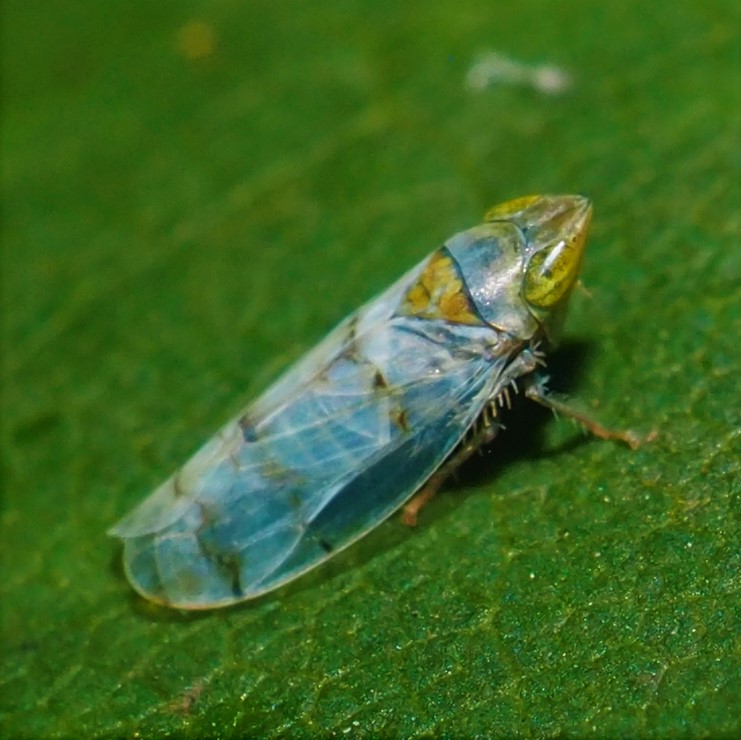
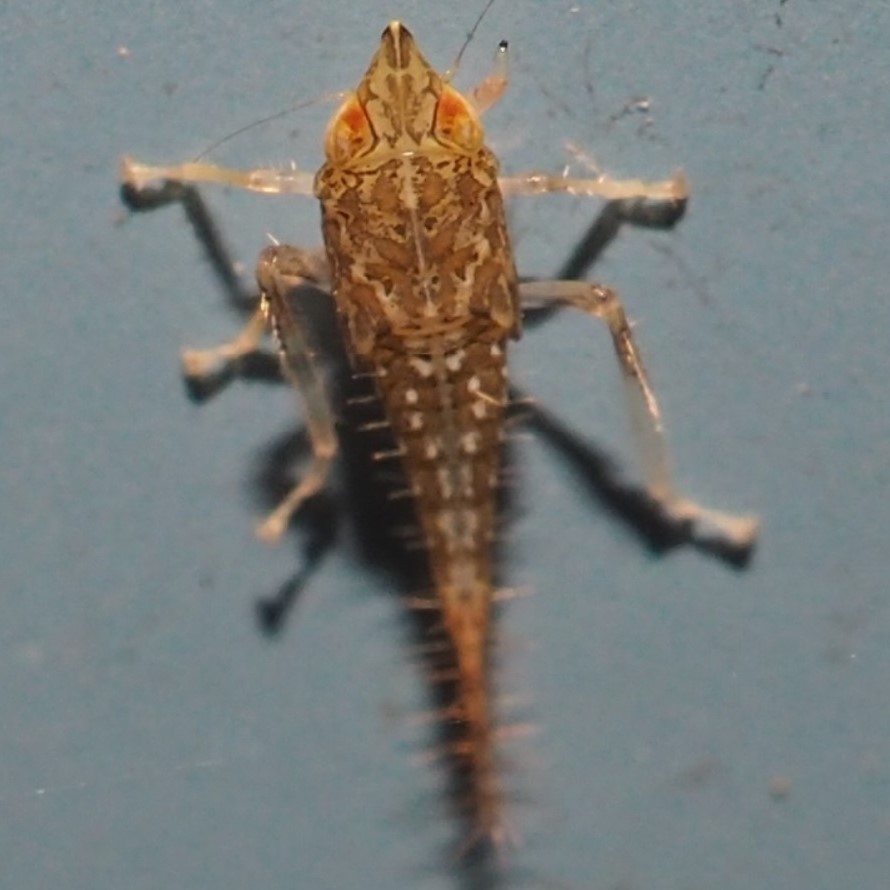
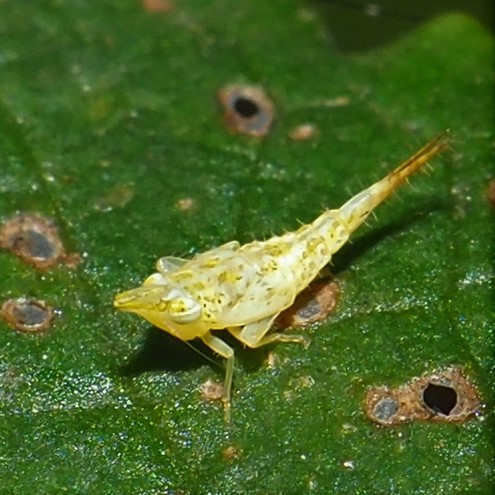
But let me set them next to each other in about the same position. Picture 1 is the adult. Now I turn the picture of this adult to match the posture of the nymph above. Now, especially if we look at the eyes, we can see that the eyes of the adult are almost exactly like the eyes of the nymph. The big difference is that the adult's wings cover the rest of its body.
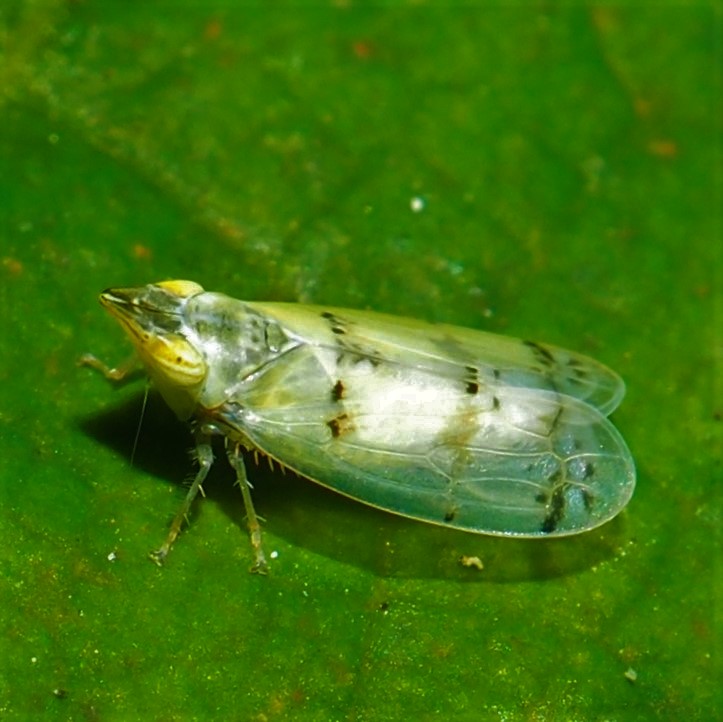
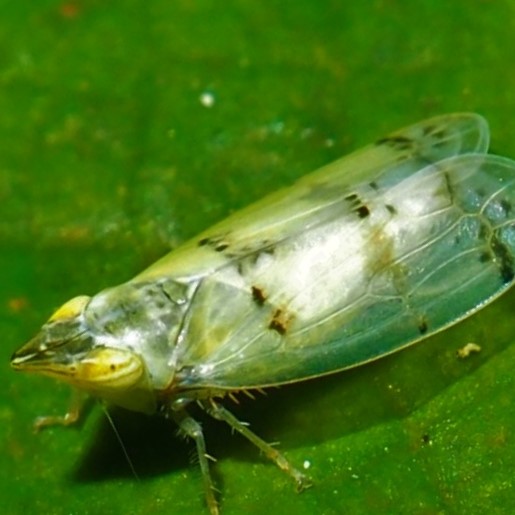
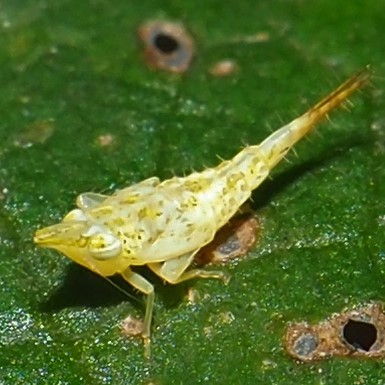
I have a few more favorite Nymph-Adult pairs. First up is the Coppery Leafhopper, Jikradia (formerly Coelidia) olitoria, which in its nymphal form looks somewhat like a little bird with a turned-up tail.
Here it is in several stages of wing development.
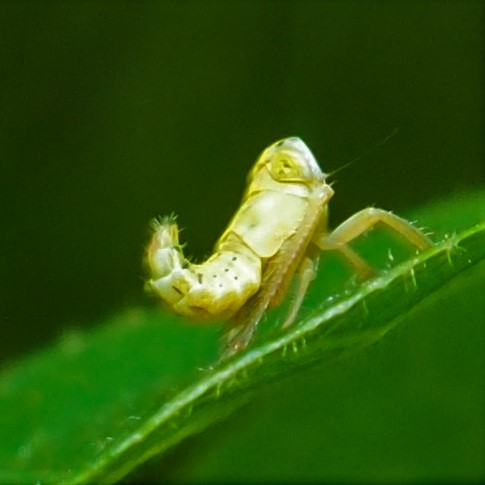
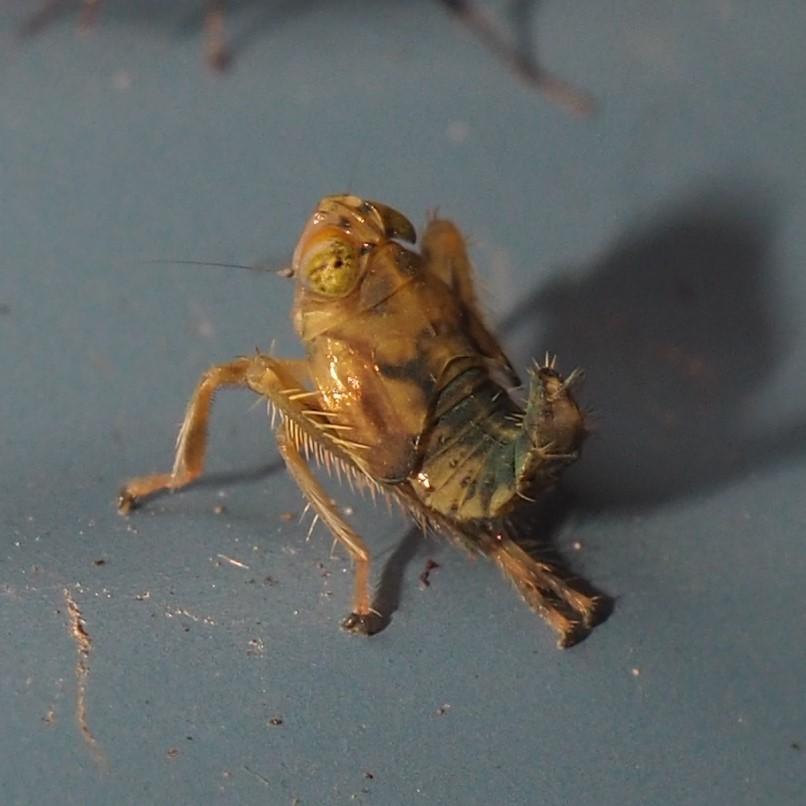
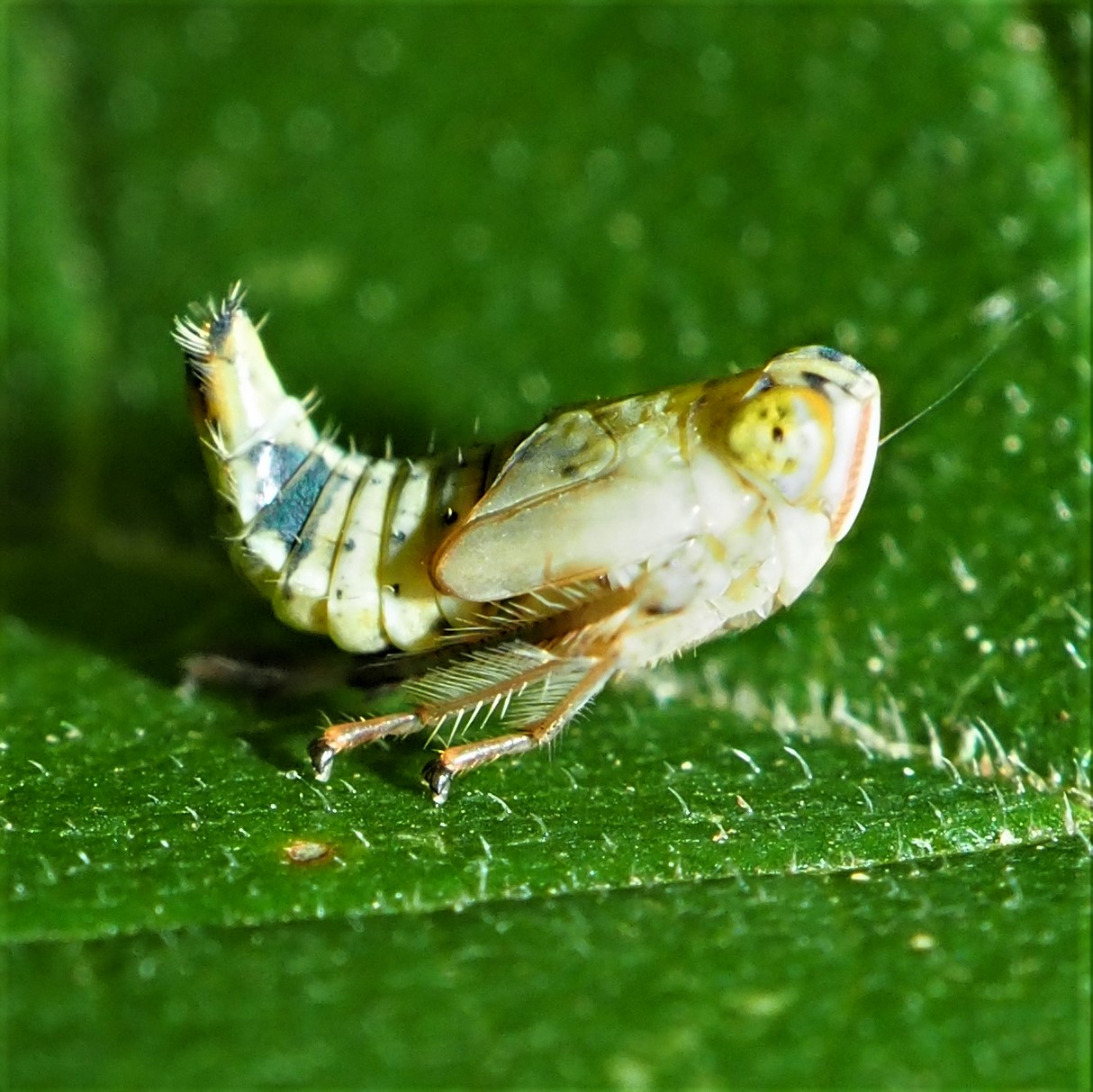
Now we can compare the adult with the bigger nymph. I think the huge eyes give it away.
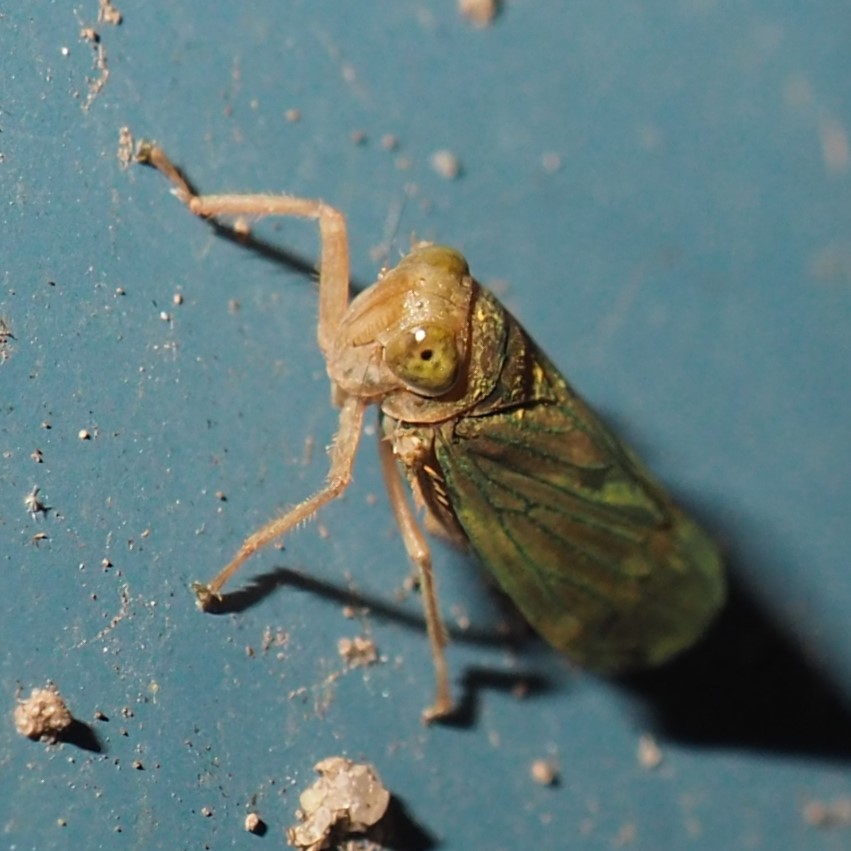
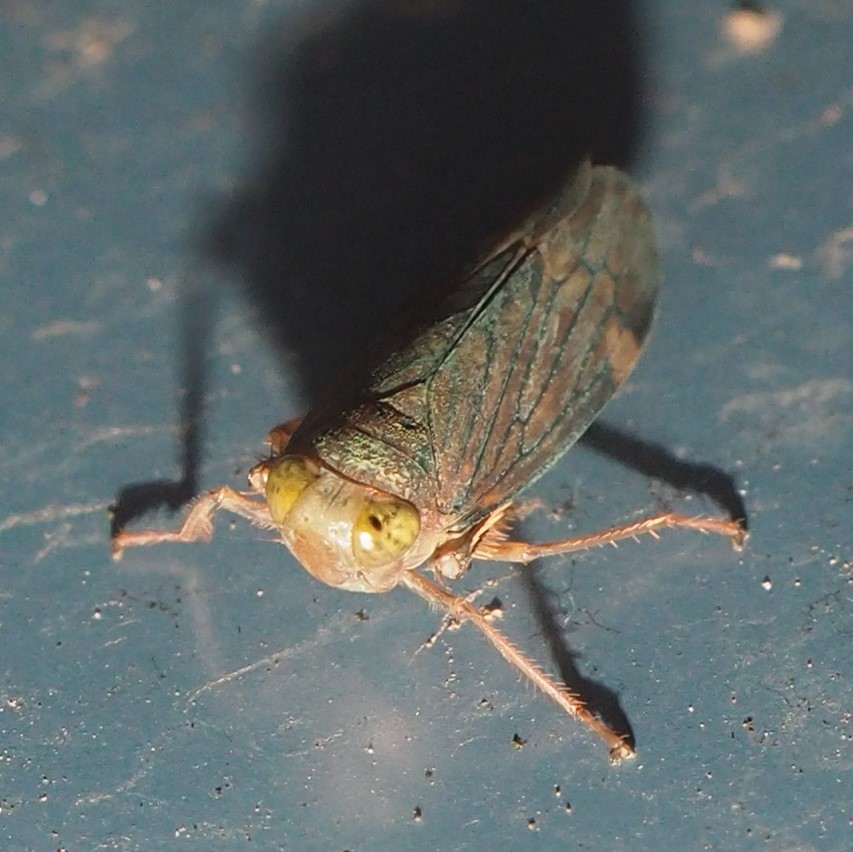

Another nymph with a turned-up tail leads surprisingly to a more "ordinary-looking" adult. For a long time, I thought it was another Jikradia olitoria nymph, but finally learned it was the nymph of a Japanese Leafhopper. (Note: NOT a Japanese MAPLE Leafhopper. They follow the same path from Typical Leafhopper through Subfamily Deltocephalinae and then their paths diverge.) They aren't even in the same genus.
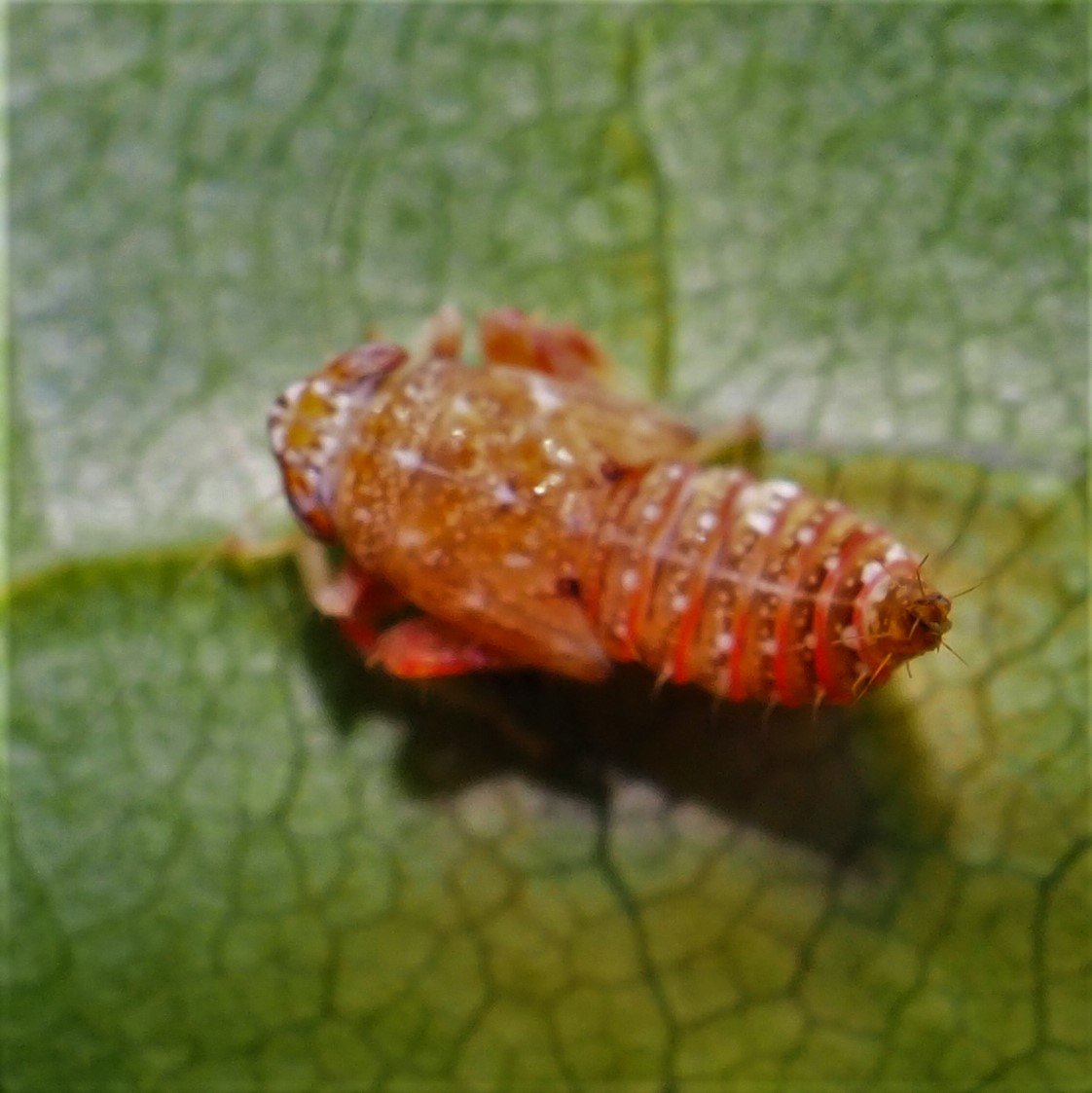
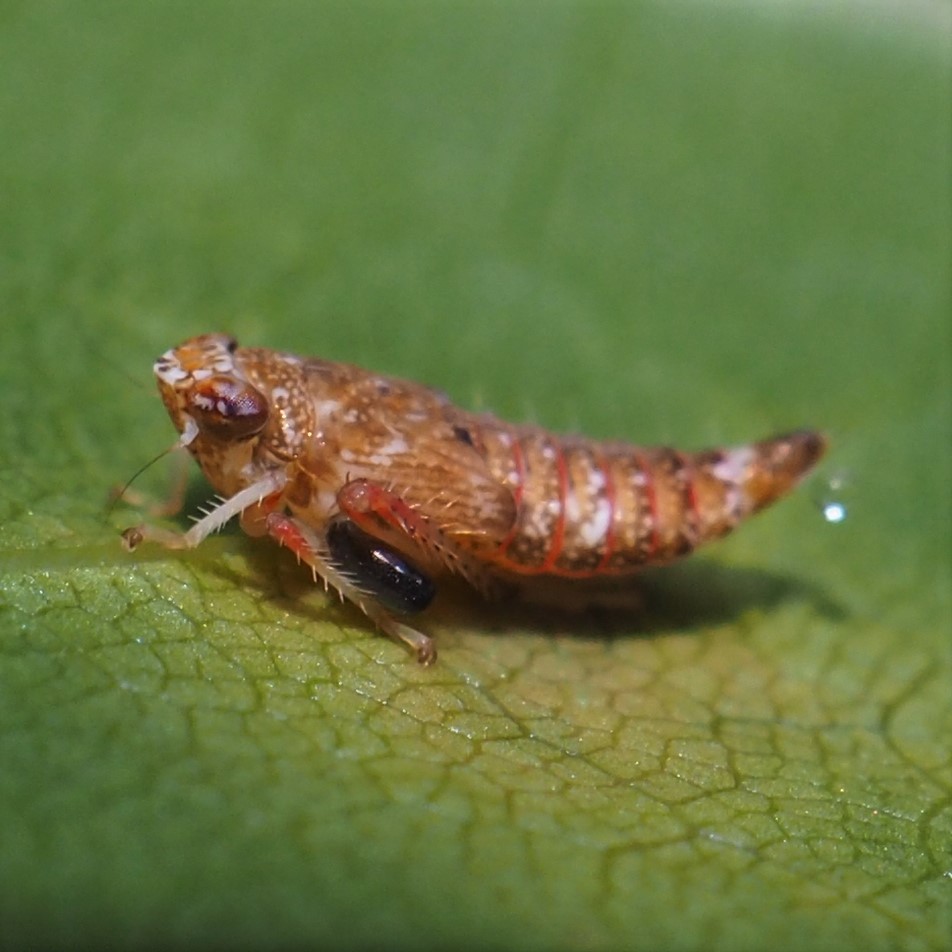

To prove how different they are, here are nymphs and adults of the two "Japanese" nymphs.




I've seen these Froggish-looking creatures for years but only recently have learned that they are the nymphs of a quite "ordinary-looking" leafhopper, Agallia quadripunctata.

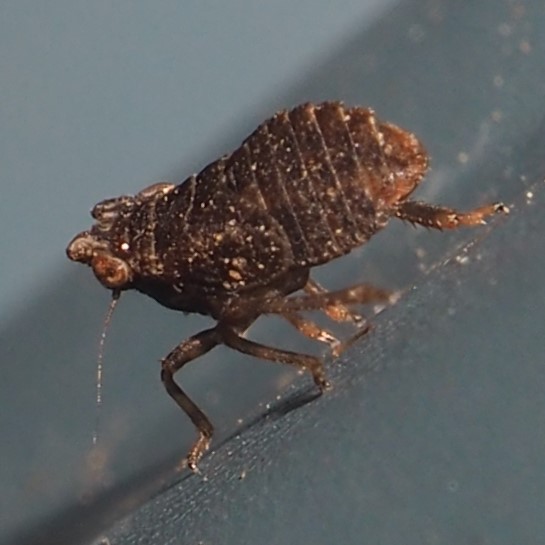
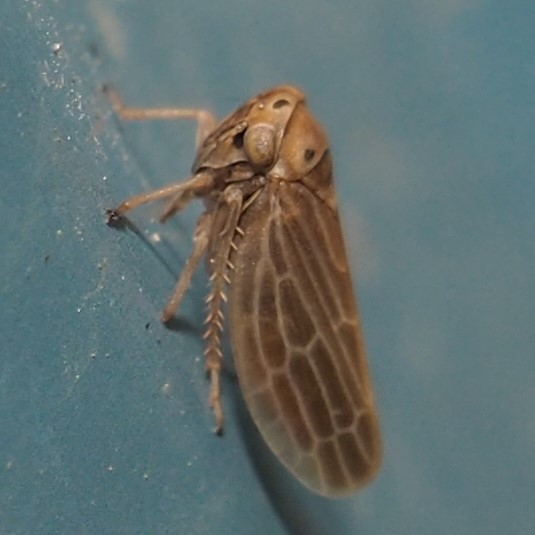
One of my favorite genus of Leafhoppers is genus Scaphoideus. Many of the genus seem to have a stylized flower on the tail of their wing. Here are two nymphs. The middle picture may show an earlier instar. I'm not sure which adult(s) these may be the nymphs of.
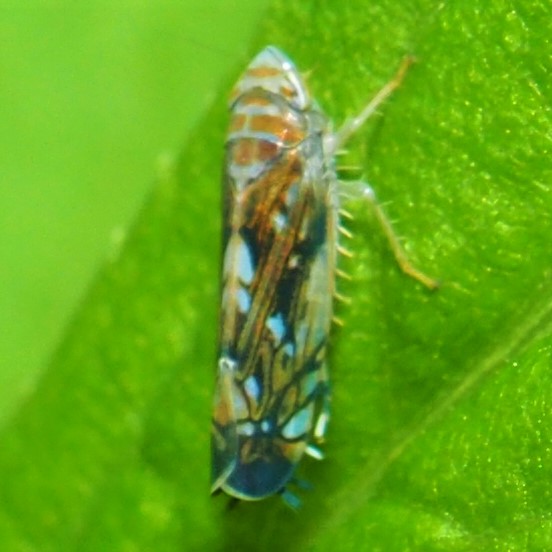
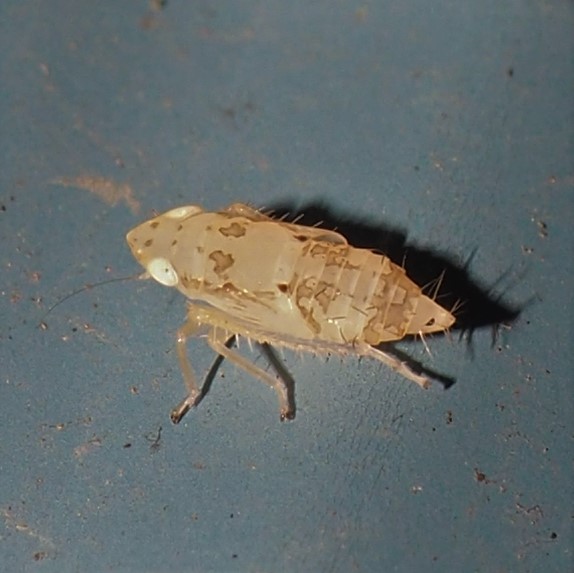

One of everyone's favorite Leafhoppers is the genus Graphocephala. The first one is Graphocephala fennahi, the Rhododendron Leafhopper; Number 2 is the Red-banded Leafhopper, or Graphocephala coccinea. Their nymphs may have a pink stripe, like this one (picture 3), on their developing wing.
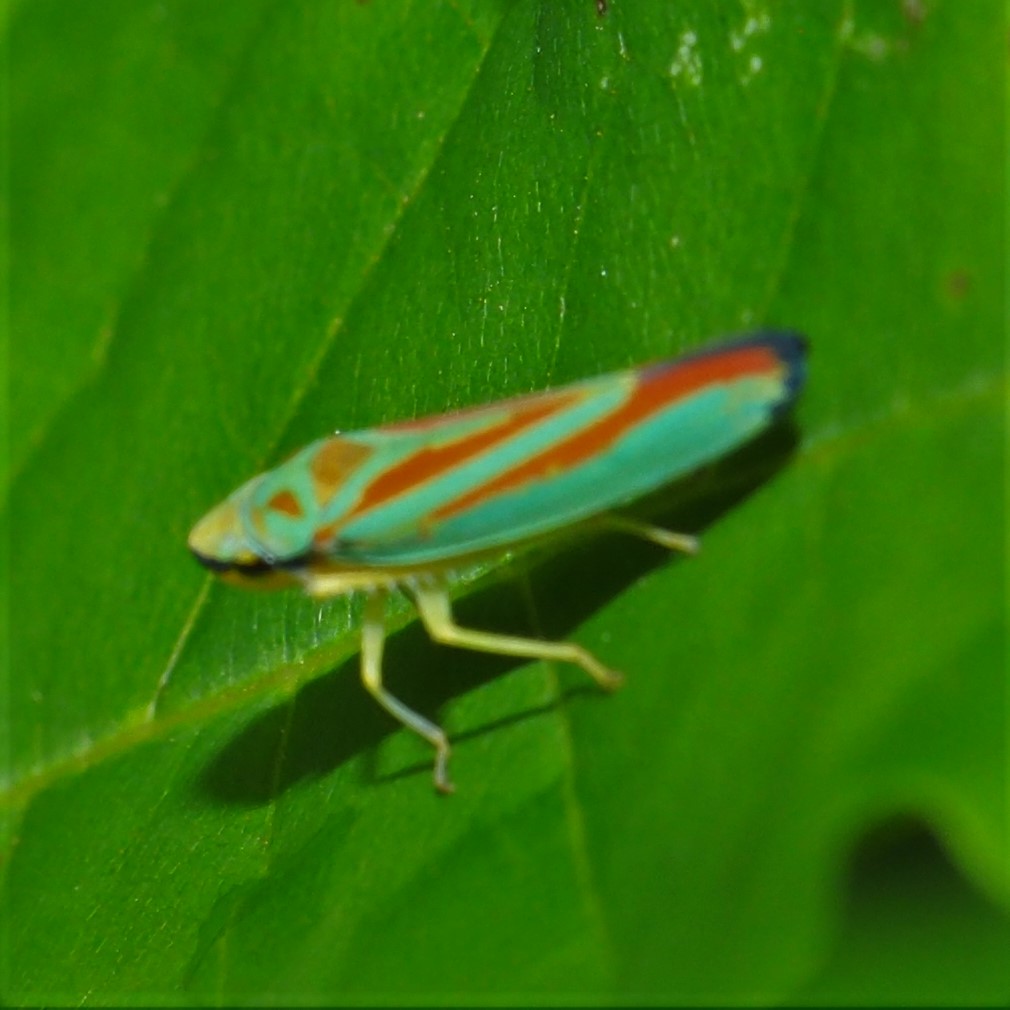
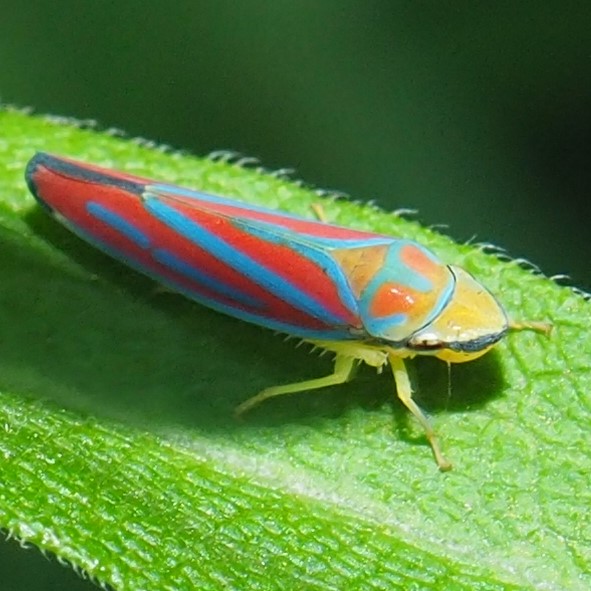
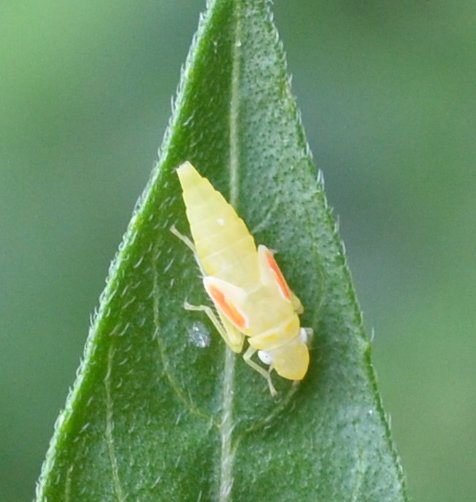
All these examples have concerned metamorphosis in Leafhoppers. Let's turn to the True Bugs, in particular the Plant Bugs.
One day I was doing something that turns out to be a productive way of finding new insects: that is, gently turning over a leaf. Here, on the "underside" of an Oak leaf, was a creature that I thought at first to be a fly of some sort. A colleague on iNat came up with an Identity -- the Plant Bug Hyaliodes harti.

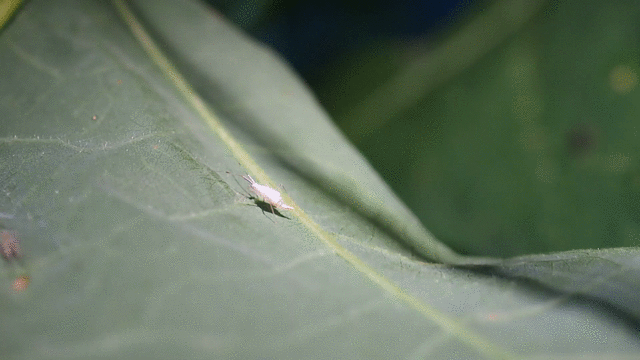
A day or two later, the white runner was gone and in its position on the underside of the same Oak leaf was this Plant Bug, Hyaliodes harti. Do you see any resemblance? We are now studying the metamorphosis of True Bugs...
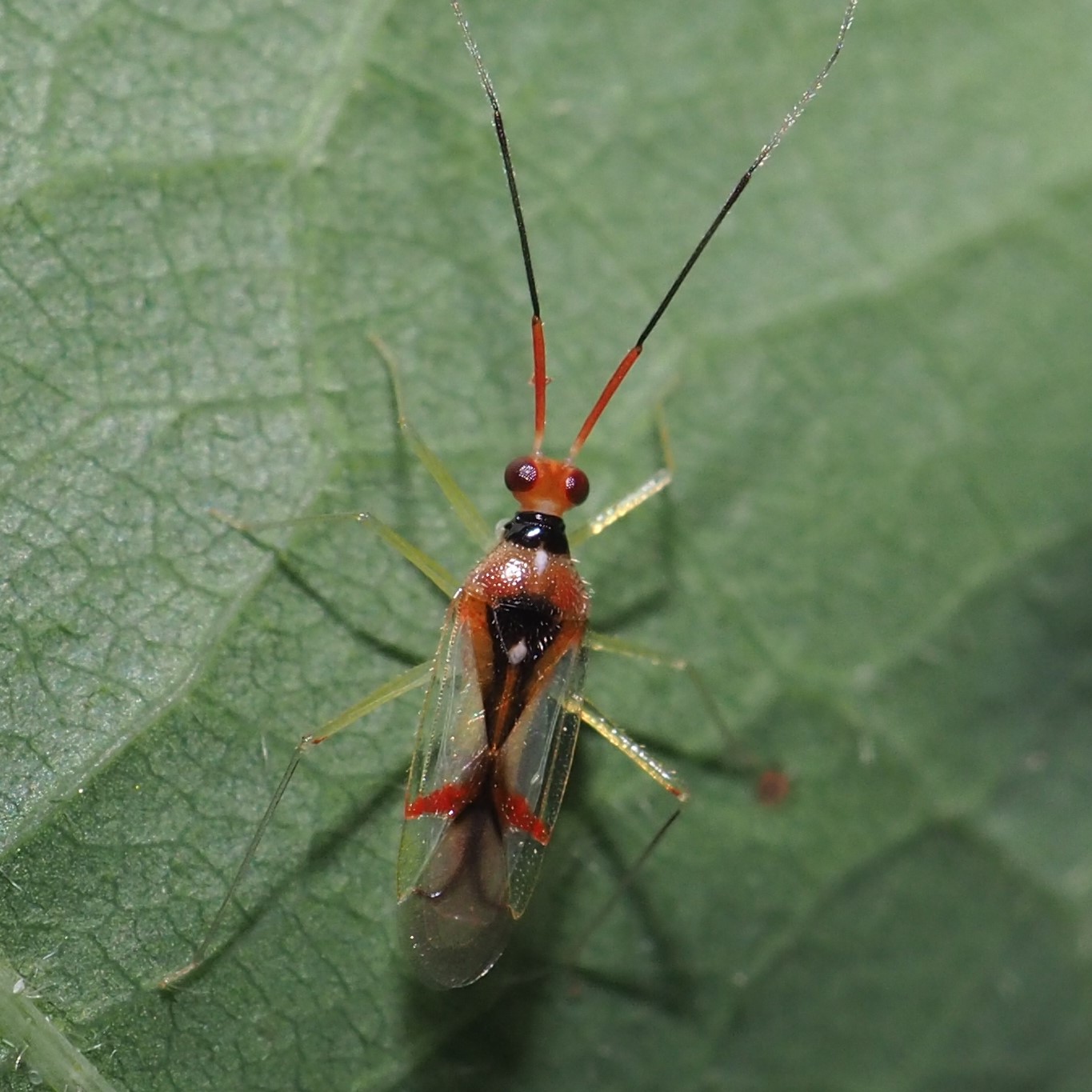
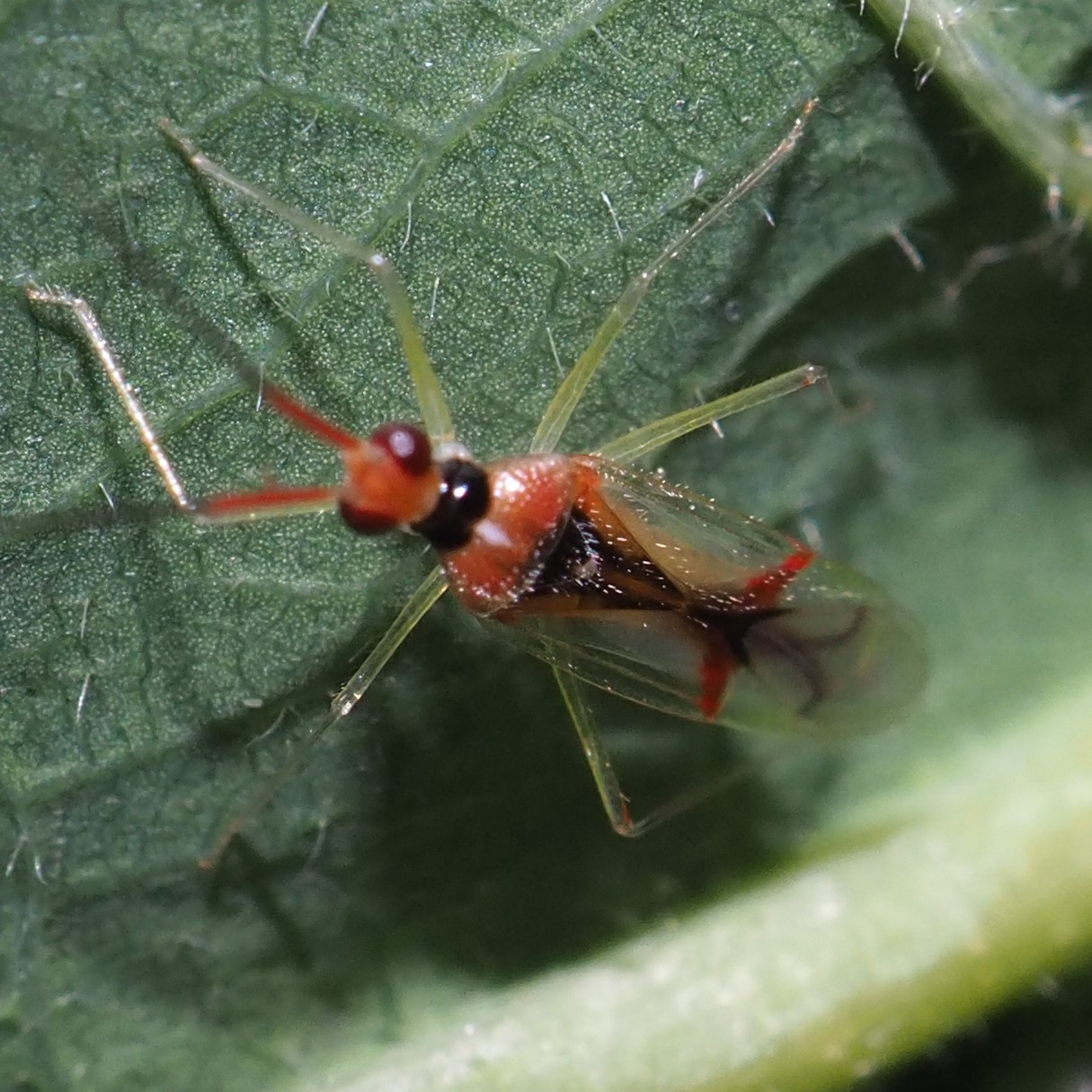

I was lucky on that last one that the adult Bug didn't travel far from where we saw its nymph.
Here is a more familiar Plant Bug (Mirid). It starts out red and black and gradually grows bigger and bigger black wings. But the adult is Green and Black striped and called the Four-lined Plant Bug. Red and Black or Green and Black, both are hell on plants.
 5 30 19 1.jpg)
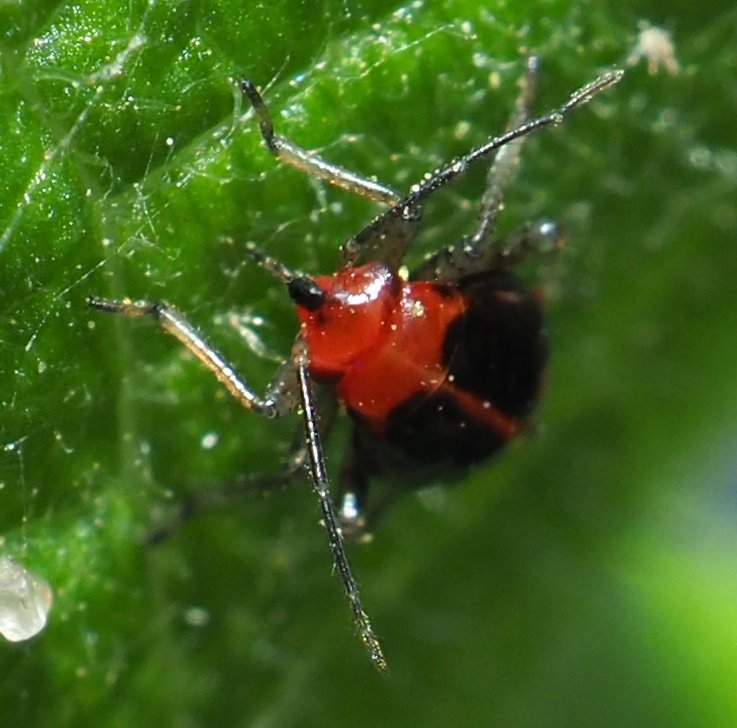
 adult 6 9 15ab.jpg)
Here is an Ant that I see fairly often in the summer. I always marvel at how its body seems to have been constructed with toy parts. Finally after doing some reading I find that this isn't really an Ant at all, but rather the nymph of the following Plant Bug, Paraxenetus guttulatus. Look at the middle picture, a later instar than the original "Ant". See how its wings have grown out? The third picture shows the mature Plant Bug. There are quite a few Plant Bugs who go through a nymphal phase that resembles an Ant. We call such a creature an Ant Mimic.

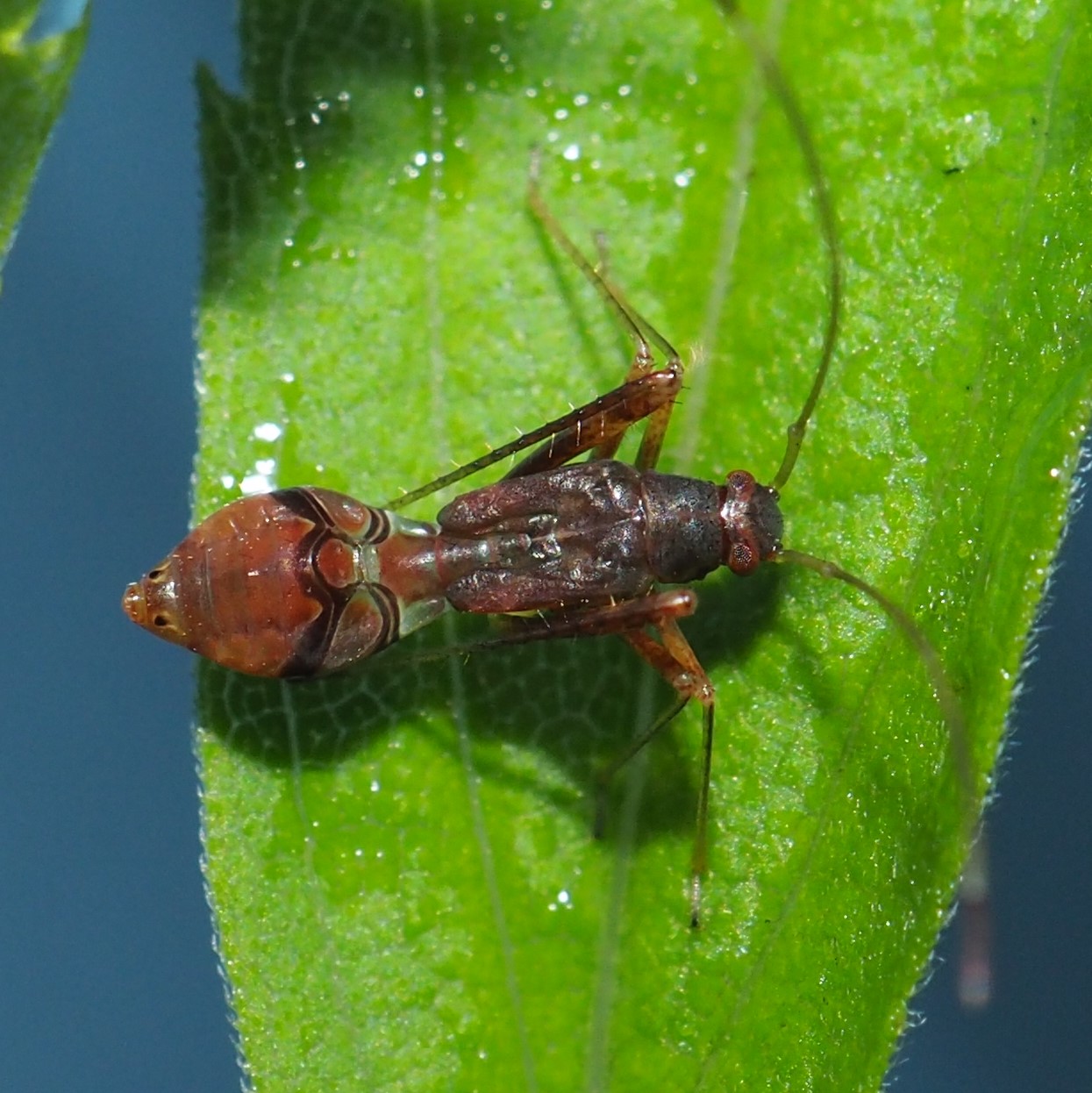
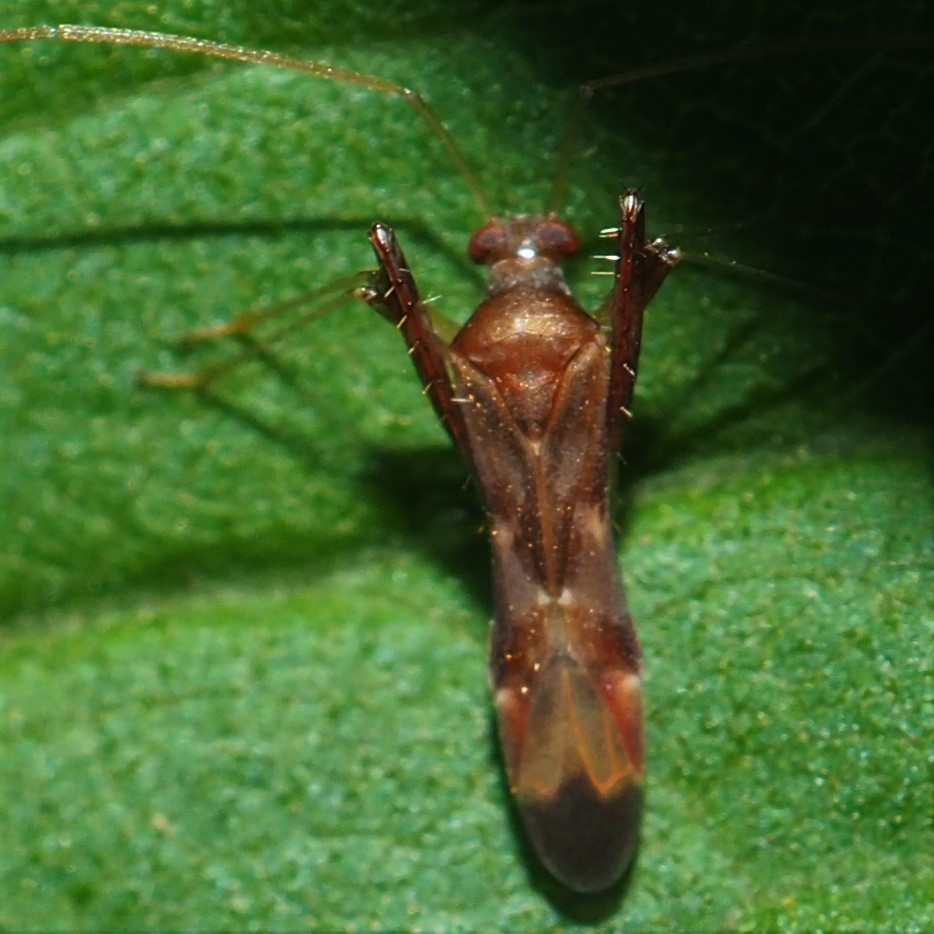
Here is another example. This "Ant" was moving fast in the Thistles but you can see it looks like an Ant. The adult is a Lupine Bug (Megalotomus quinquespinosus). It is a True Bug but NOT a Plant Bug.
About the only thing that you can recognize from the Ant mimic and in the adult Bug is the resemblance in the antennae, which are black and then white counting from the tip.
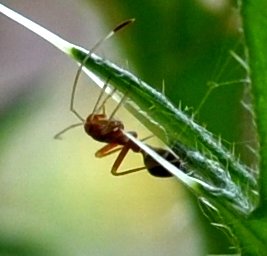
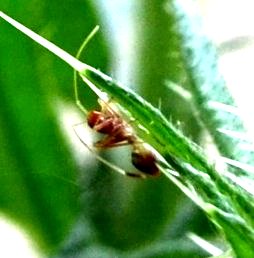
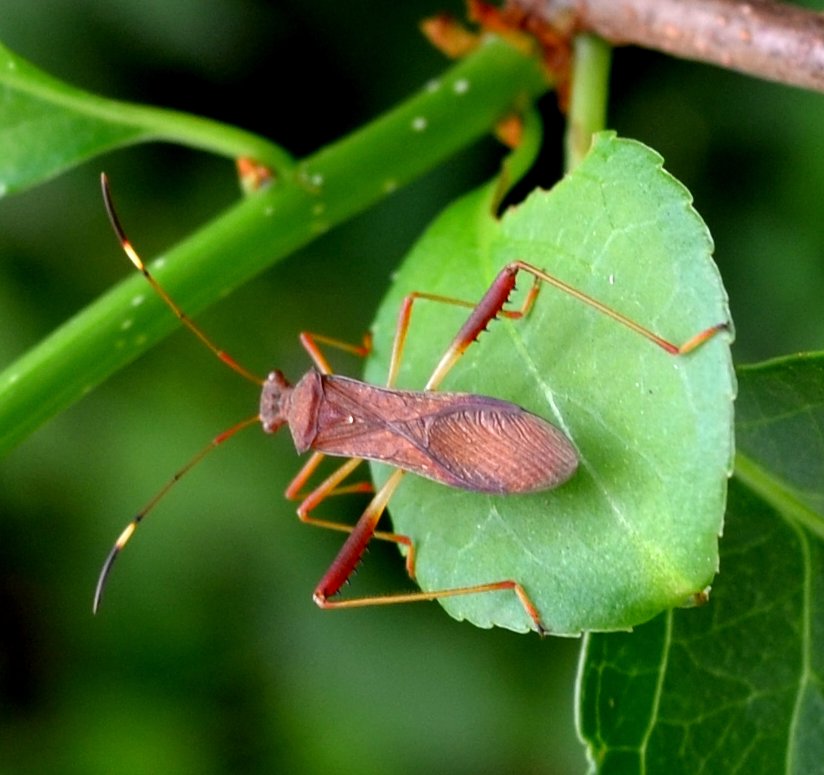
We skip to another kind of insect, the Barklice. They are very tiny and only a maniac would get interested in them. In the Spring of 2020, I began finding some rather distinctive Barklouse nymphs that I didn't recognize. They started out as a good-sized colony, probably soon after hatching from eggs. This first picture was from May 5. The next shows a nice large nymph on June 4. Spiders loved these nymphs and so by the time the colony had been reduced, partly by predation, and probably because the nymphs could go under the panels of the Wall. Anyway, the day after the last nymph disappeared, a batch of adult Polypsocus corruptus emerged - a lot of them. So that is how I deduced that the nymphs had been young P. corruptus!
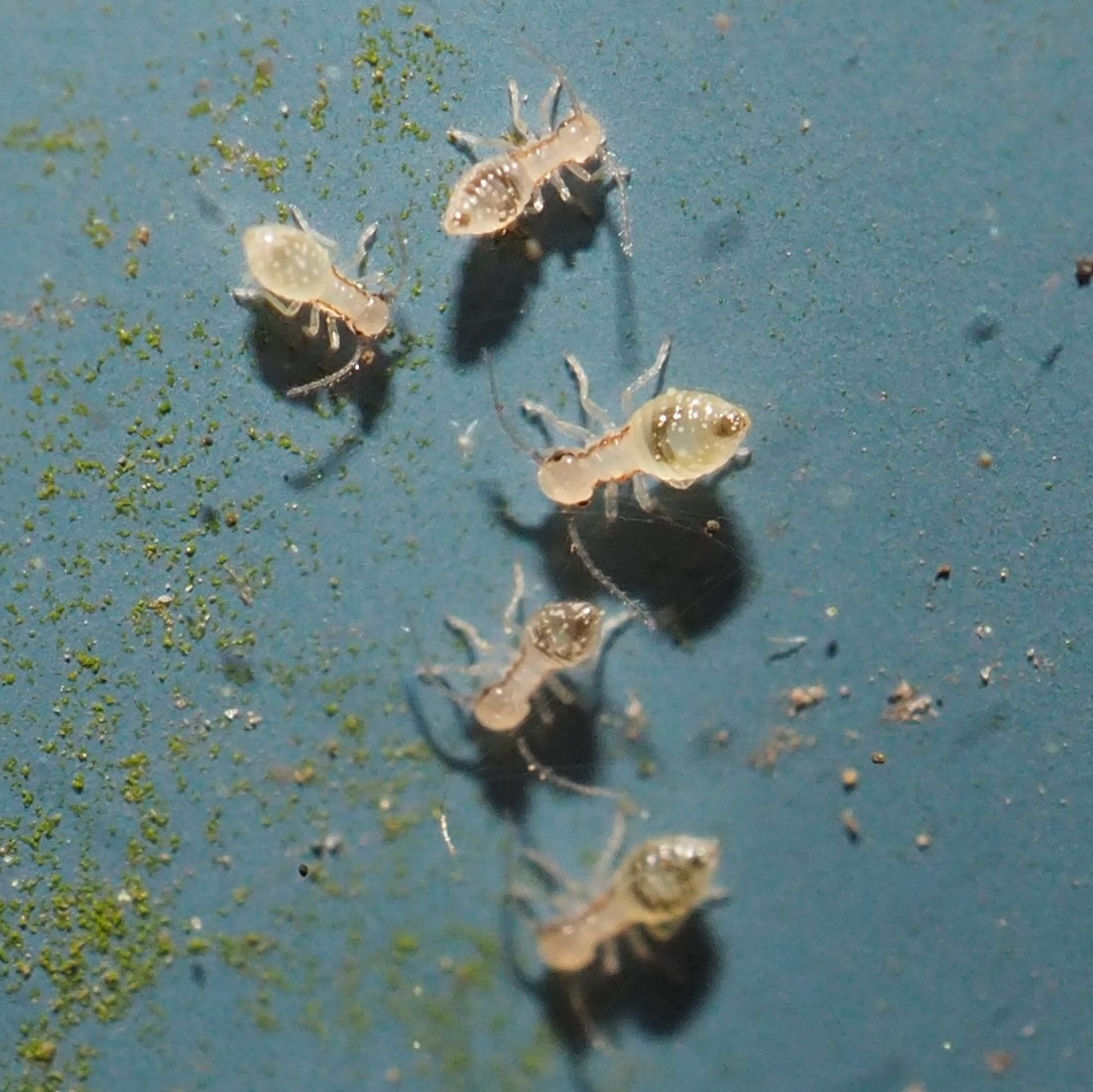
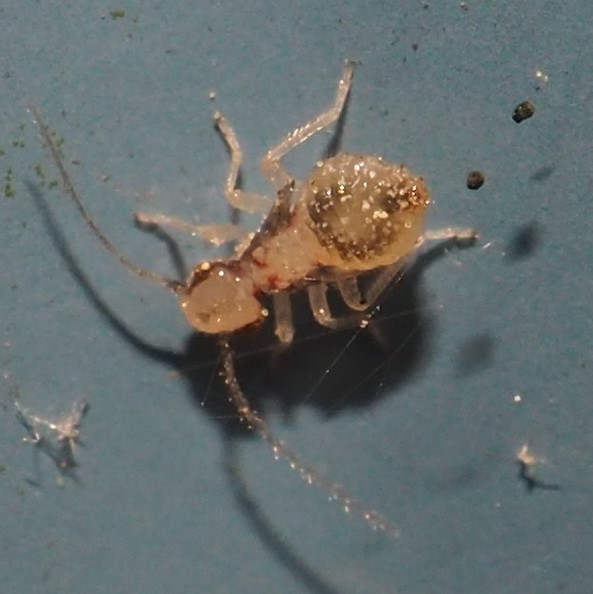
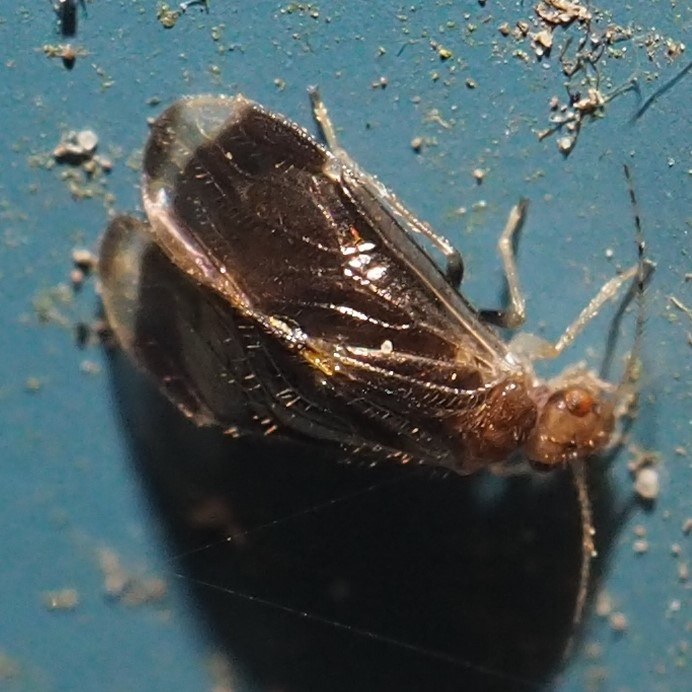
Back to Metamorphosis part 1
Ahead to Metamorphosis part 3
For more explorations of the Barklice on the Wall of Fame, see
Barklice Main Menu
Back to main menu
copyright Martha O'Kennon 2020




































 5 30 19 1.jpg)

 adult 6 9 15ab.jpg)








